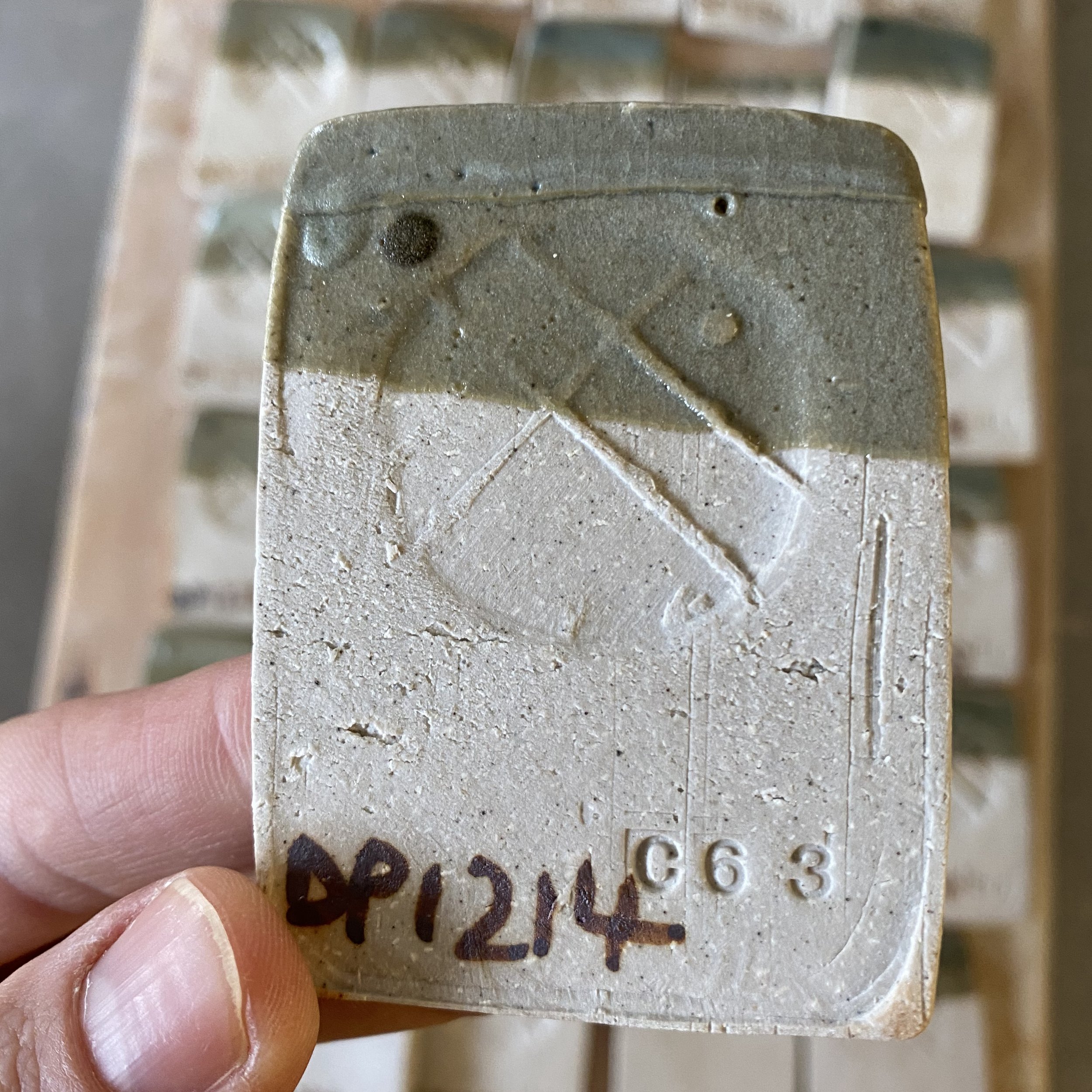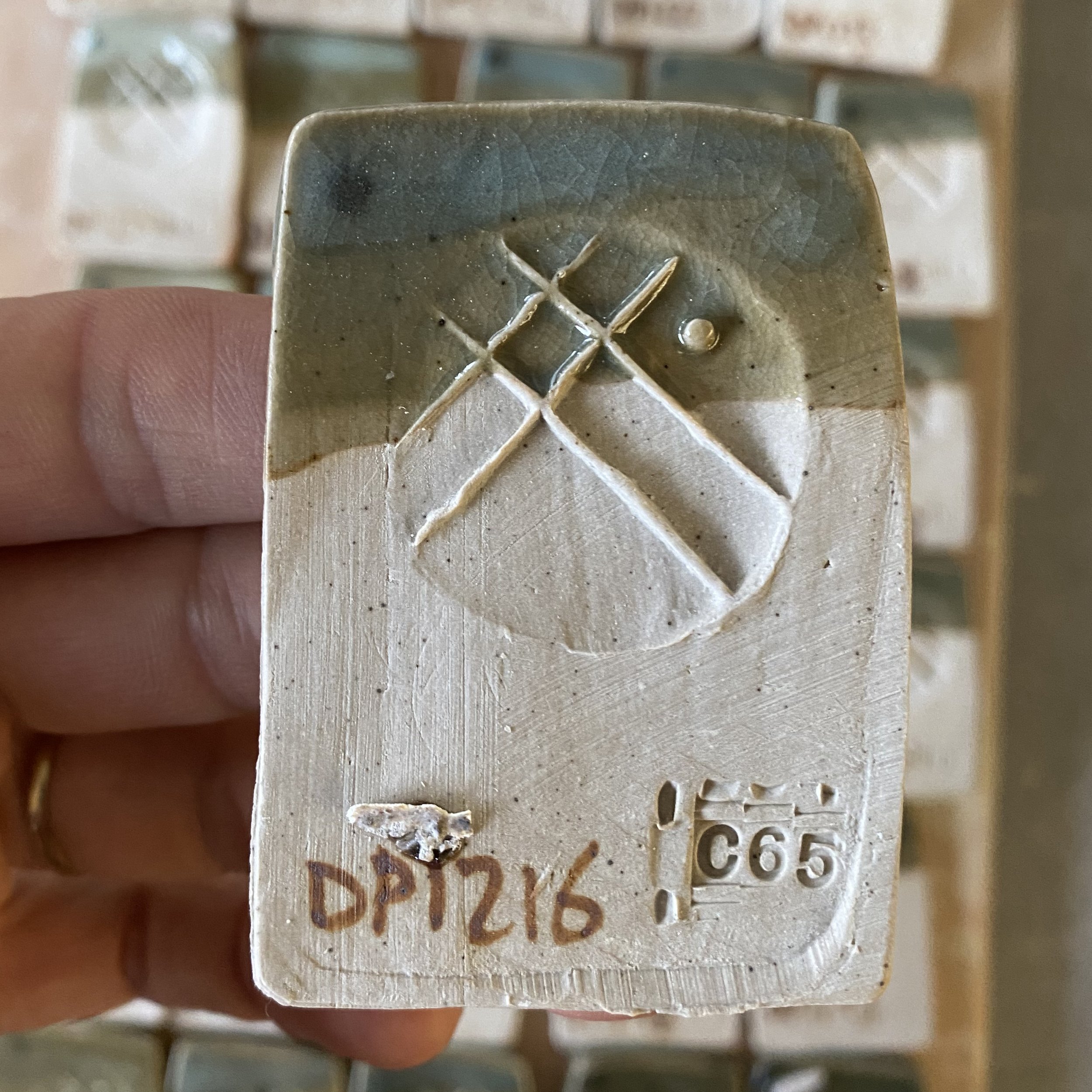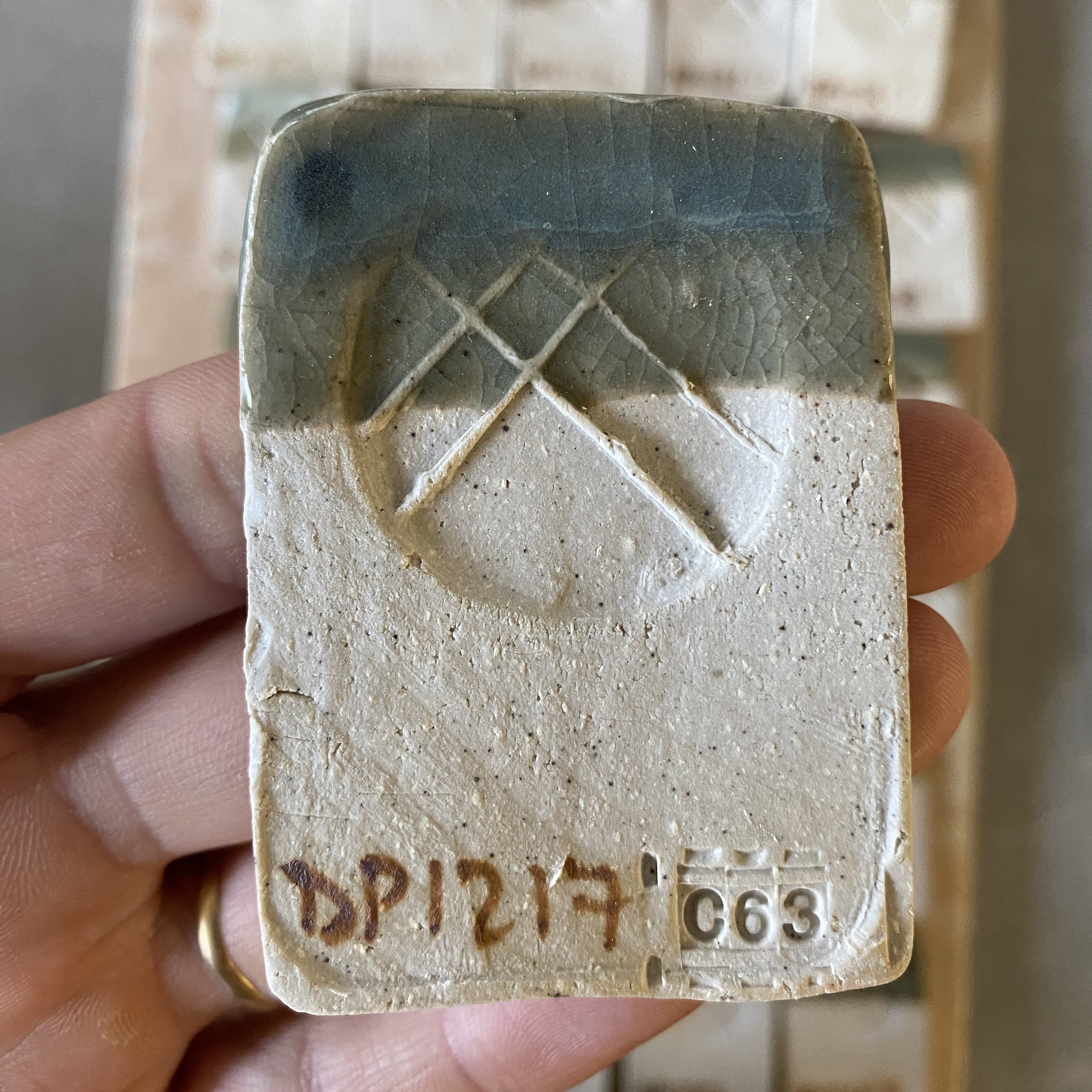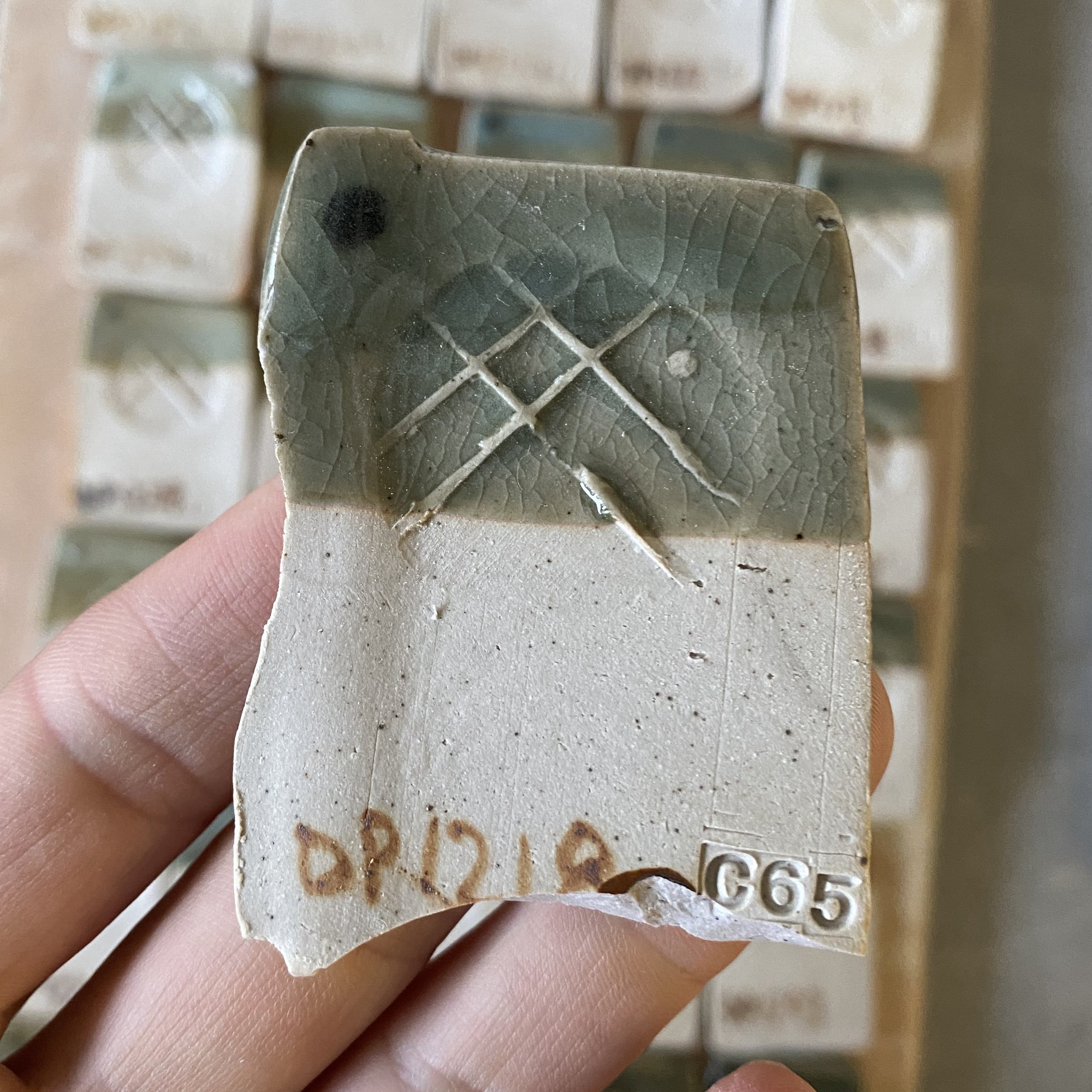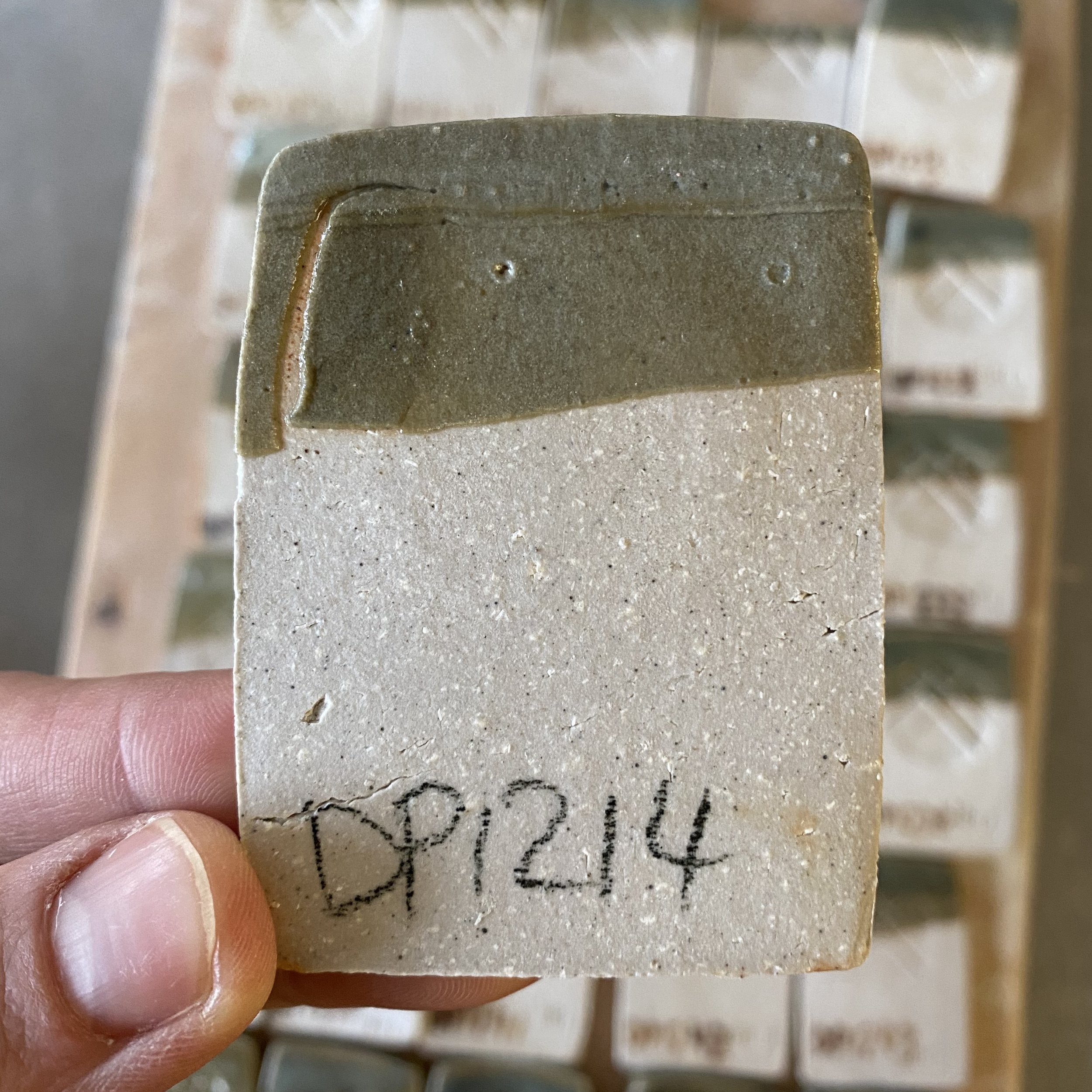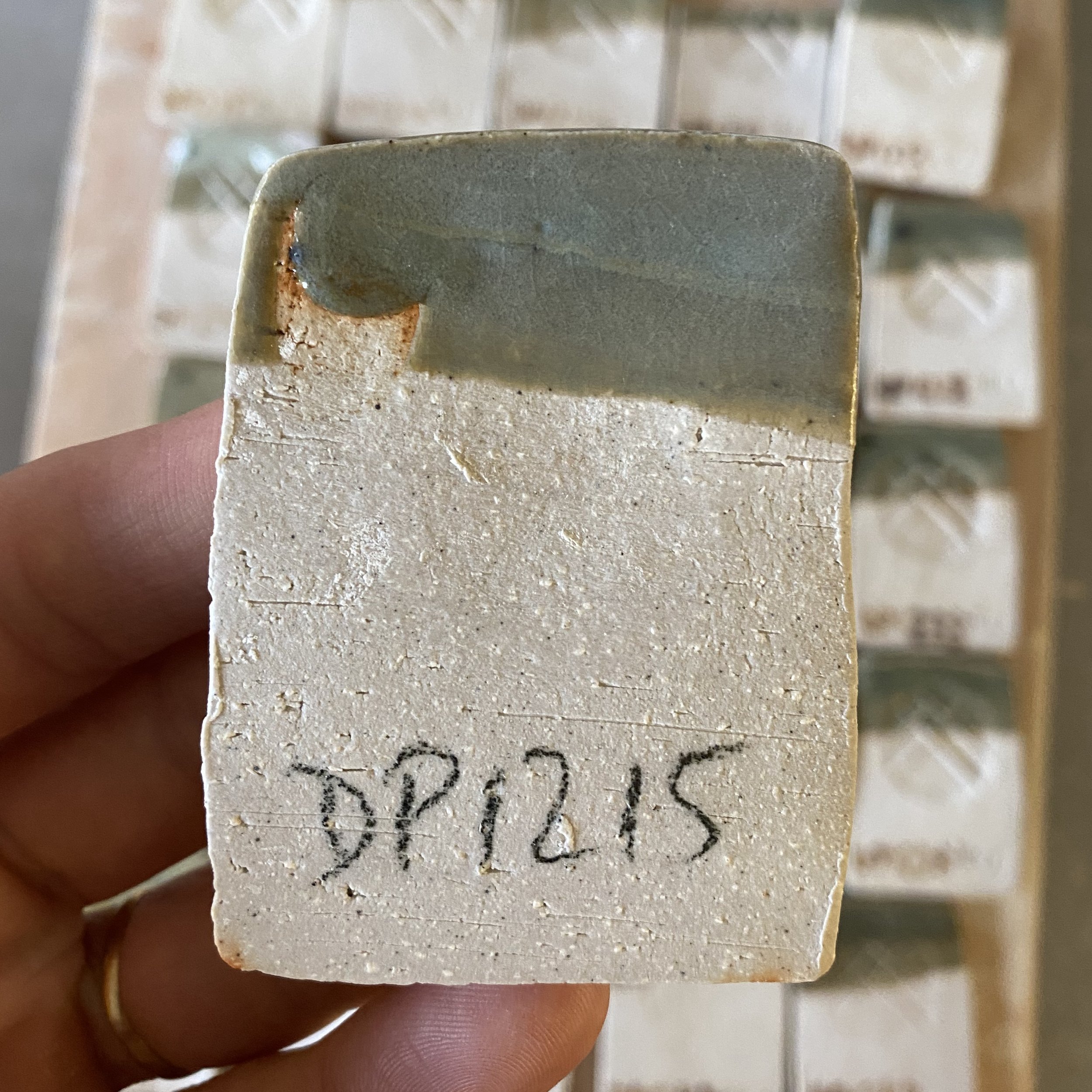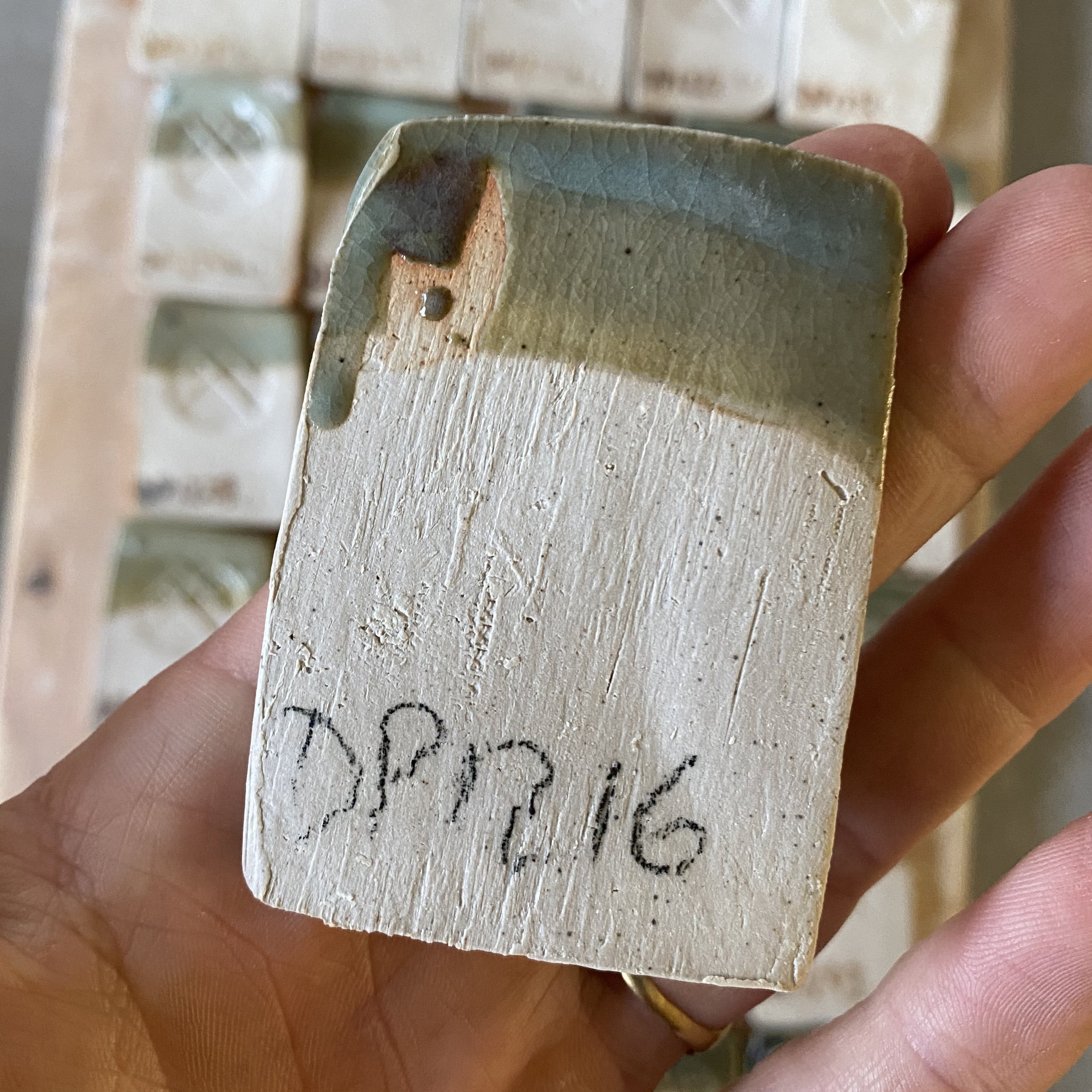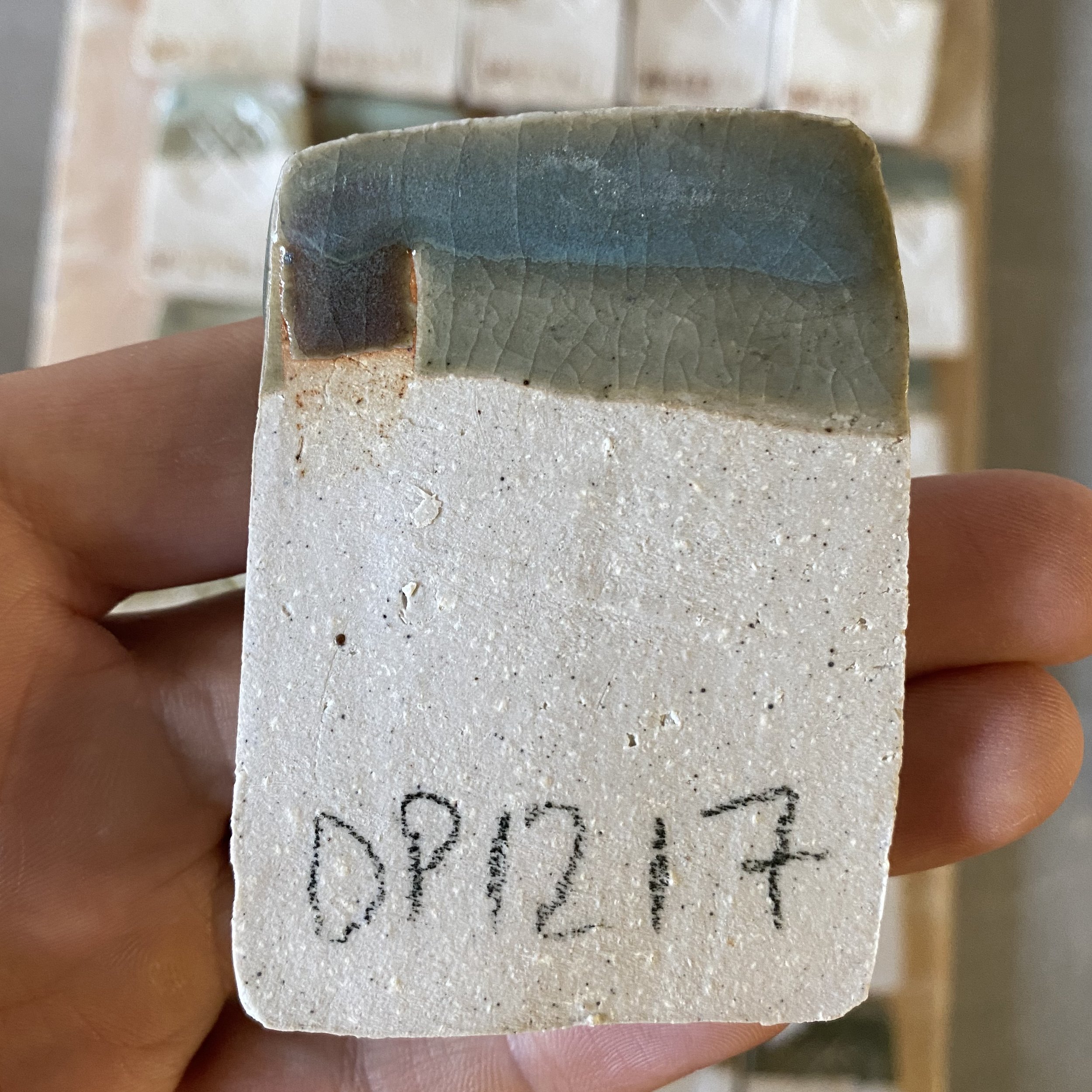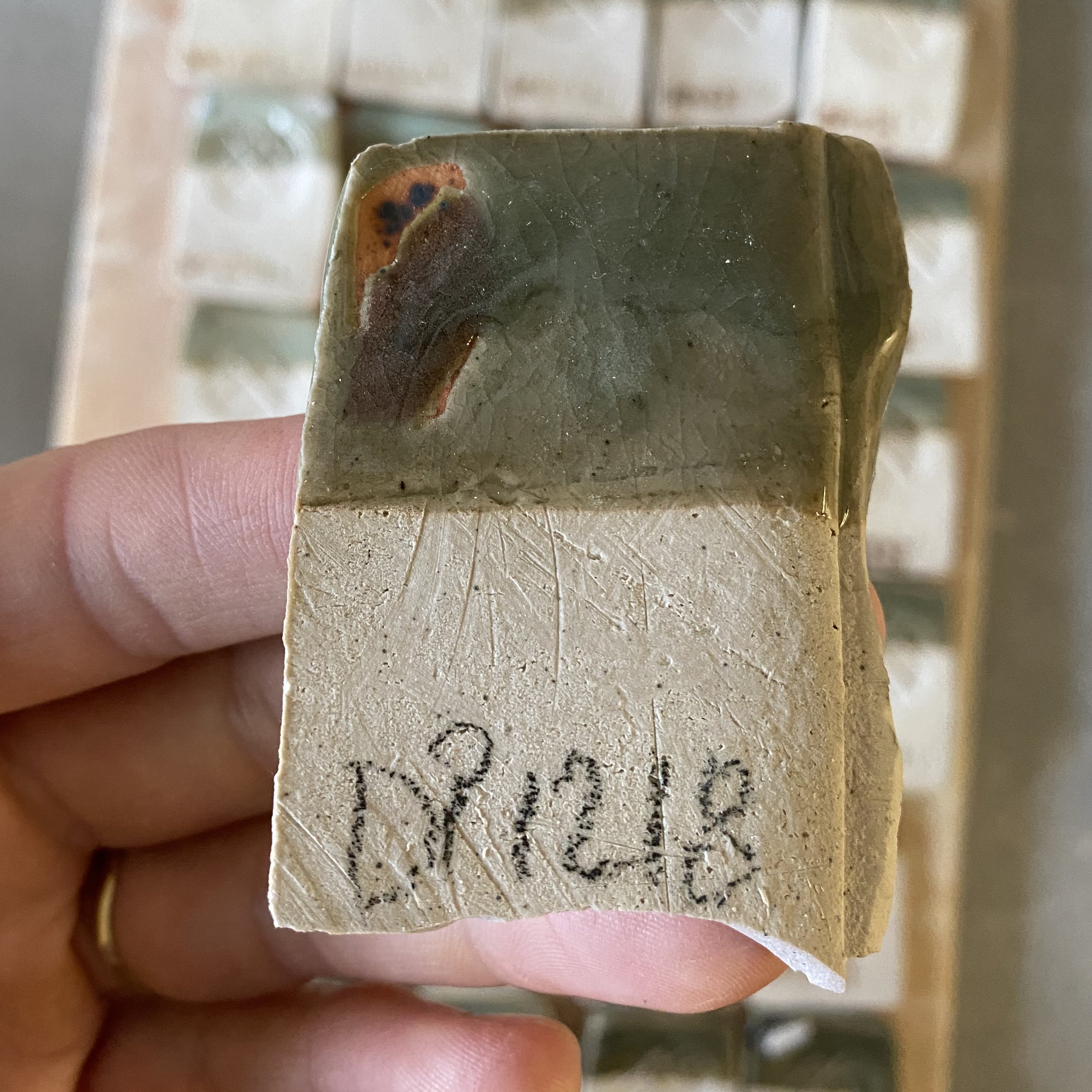Jun (Chün) glaze tests: grid test 2
After my first grid test, I saw that I was on the right track. The glazes around corner A of my grid test were particularly promising. This was the composition of Corner A…
Corner A = DP1180 (S:Al 15.11, R2O:RO 0.2:0.8)
50% DP granite
20% Silica
20% Wollastonite
7% Mahavir (potash feldspar)
3% Dolomite
+2% Bentonite
+2% Bone Ash
+1.5% RIO
For my next grid test, I decided to try to put this glaze in the center of my next grid, and move in various directions around it. Here is the breakdown of the grid…
Here is the percent analysis of each corner of this grid test:
Corner A = DP 1214 : High Silica Corner
43% DP granite
30% Silica
20% Wollastonite
5% Mahavir (potash feldspar)
2% Dolomite
+2% Bentonite
+2% Bone Ash
+1.5% RIO
Corner B = DP 1218 : High Potassium Corner
45% DP granite
14% Silica
14% Wollastonite
25% Mahavir (potash feldspar)
2% Dolomite
+2% Bentonite
+2% Bone Ash
+1.5% RIO
Corner C = DP 1244 : High Wollastonite (calcia) Corner
45% DP granite
30% Wollastonite
18% Silica
5% Mahavir (potash feldspar)
2% Dolomite
+2% Bentonite
+2% Bone Ash
+1.5% RIO
Corner D = DP 1248 : High Devil’s Playground Granite Corner
70% DP granite
16% Silica
14% Wollastonite
2% Dolomite
+2% Bentonite
+2% Bone Ash
+1.5% RIO
Lets see what happened…
On first inspection I was kind of surprised at how linear this test seemed. The successful glazes all seem in the middle row and the one to its left, running down the grid. The left side row is obviously dry, with too much silica, and the right is more like a standard celadon.
It is hard to tell too much more from this grid test, though. I think part of the issue is that these grids are so small and are fired lying down. The vertical test tiles show us much more information.
One note about these tests is that I mixed the corner glazes a bit thin. I wish the application had been thicker on these tiles. The results would have been better and easier to read. Next time!
Let’s dig in to the results. First from corner A to corner B. This is from our high silica corner to our high potassium corner…
As we might expect, corner A is pretty dry, with too much silica. As we move towards C the glaze becomes more fluxed but not particularly Jun like.
Now lets examine corner A to corner C (click on the images to enlarge them)…
In these tests we move from the high silica corner at A, to the high wollastonite (calcia) corner at C. I would have expected a decent glaze in the middle of these. There is a hint of a Jun at DP1224 but it is quite pale.
Now corner C (high calcia corner) to D (high granite corner)…
Here we find DP 1245 and DP 1246 to be Jun like. The color is a bit dull but the Jun opalescent effect is present.
Now let’s examine corner B (high potassium corner) to D (high granite corner)…
In this run we see the glaze get darker towards corner D, but largely remain as a celadon glaze. No signs of Jun opalescence along this row.
Now I will lay out the middle of the grid. Front of the tiles first and then the backs below.
Most of these glazes show signs of Jun opalescence. Most promising seem to be in the center of the grid, as I expected. DP1231 is composed of 50.75% DP granite, 19.5% silica, 19.5% wollastonite, 8.75% mahavir feldspar, 1.5% dolomite, 2% bone ash, 1.5% red iron oxide.
There were promising glazes around this, but in general the left side of the center was more promising than the right. This is the higher silica zone.
After this test, I could have picked one of these to work with and glaze some pots, but I wanted to hone in more tightly, to see if I could find a magic ratio of ingredients. One more grid test and I should have it!
Oh also, I should mention that these were fired to cone 10 (I could have taken it a bit further so cone 10 touched down but this is acceptable) with no special cooling. Here is the cone pack, and my notebook notes just to be thorough about it:



